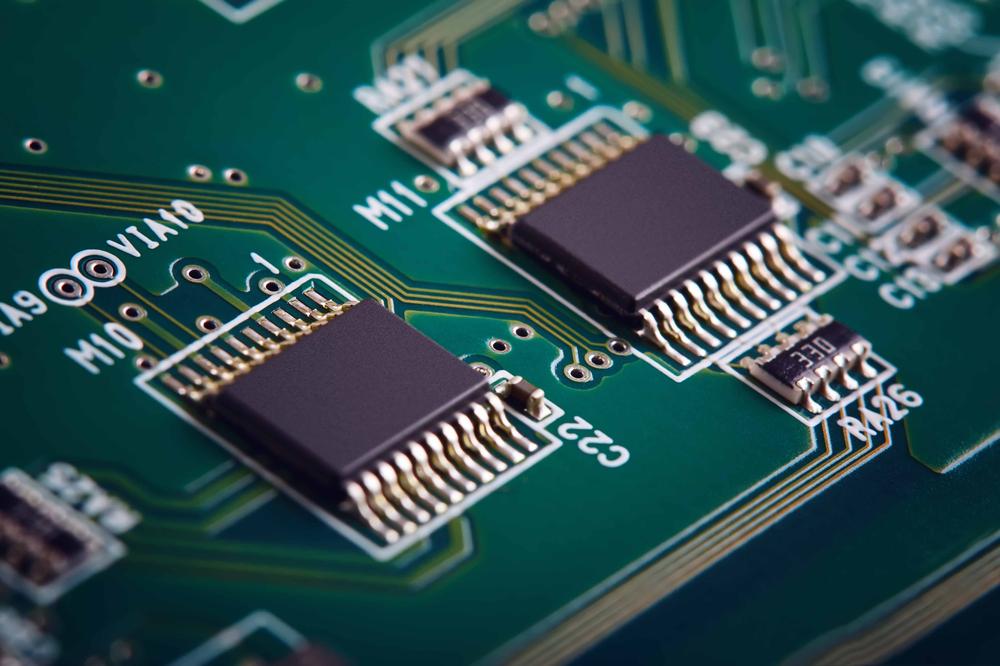
The B2B platform for the best purchasing descision. Identify and compare relevant B2B manufacturers, suppliers and retailers
Close
Filter
Result configuration
Continents
Select continent
Locations
Result types
Company type
Select company type
Industries
Select industry
Company status
Select company status preset
Number of employees
Min.
Max.
Founding year
Time Sport International
Moirans, France
A
- Employees
1987
Key takeaway
The company, SRAM LLC, emphasizes the importance of using updated web browsers for an enhanced shopping experience.
Reference
Service
SRAM
DICE
Linz, Austria
A
1-10 Employees
-
Key takeaway
Infineon Technologies provides a comprehensive range of low-power and high-speed SRAM memories, ensuring a stable supply and long-term support.
Reference
Product
SRAM (Static RAM) - Infineon Technologies
Infineon offers the broades portfolio of High-speed, Low-power and reliable Synchrnous and Asynchronous SRAM memories with stable supply and long term support.
Alliance Memory
Washington, United States
B
11-50 Employees
2006
Key takeaway
Alliance Memory is a semiconductor manufacturer that offers a range of SRAM products, along with DRAM and FLASH, providing direct stock availability from locations in the U.S., Shanghai, and Taiwan. Their SRAM products include various densities and specifications, catering to both legacy and new technology memory needs.
Reference
Product
Psuedo SRAMs (PSRAM) - Alliance Memory
Density Org Part Number VCC Temp. Range Speed (ns) Packages Stock 8M 512Kx16 AS1C512K16PL 1.7V – 1.95V(1.8V) Industrial (-30 ~ +85°C) 70 FPBGA(48) Buy AS1C512K16P 2.6V – 3.3V (3V) Industrial (-40 ~ +85°C) 70 Buy 16M 1Mx16 AS1C1M16PL 1.7V – 1.95V(1.8V) Industrial (-40 ~ +85°C) 70 FPBGA(48) Buy AS1C1M16P 2.6V – 3.3V(3V) Industrial (-40 ~ […]
Looking for more accurate results?
Find the right companies for free by entering your custom query!
25M+ companies
250M+ products
Free to use
Memphis Electronic
United States
B
101-250 Employees
1991
Key takeaway
MEMPHIS Electronic specializes in memory products, including SRAM components from various manufacturers. With over 30 years of experience, they offer a wide range of SRAM types, ensuring tailored solutions for customer needs.
Reference
Product
With us you will find SRAM components from numerous manufacturers
Specialized distributor for SRAM components such as Low Power SRAM, Fast SRAM, Synchronous SRAM, Pseudo SRAM from various manufacturers.
RAAAM Technologies
United States
B
1-10 Employees
-
Key takeaway
RAAAM Technologies addresses the challenges of SRAM memory by offering patented GCRAM macros that provide up to 2X higher density and up to 3X lower power consumption compared to traditional SRAM. Their innovative technology significantly reduces the area and power requirements, making it ideal for applications in AR/VR, Machine Learning, IoT, and Automotive.
Reference
Product
RAAAM Technologies | Technology
product portfolio High-Density GCRAM Macros Key Features Up-to 2X Higher density vs. SRAMUp-to 3X Lower power vs. SRAMStandard SRAM interfaceExtended
Smart Modular Technologies
Newark, United States
B
1001-5000 Employees
1988
Key takeaway
SMART offers a diverse range of memory products, including Persistent Memory (NVDIMM), designed to meet the increasing demands for robust memory in data center and storage server applications. Their solutions address the growing need for reliable memory in various devices connected through the Internet of Things (IoT).
Reference
Product
SMART Modular | Rugged Memory

DIP INTERNATIONAL
United Kingdom
A
11-50 Employees
1989
Key takeaway
MemoTech is a specialized distributor of memory components, including a wide range of low power and high-speed SRAMs tailored for industrial use. With a focus on providing dedicated knowledge and support throughout the project lifecycle, MemoTech ensures access to various SRAM specifications, highlighting their commitment to service and expertise in the memory product sector.
Reference
Product
Details of low power Srams and high speed Srams for the Industrial user
This memory product range probably offers the widest range by specification. Fortunately we can supply nearly all varieties. Asynchronous Srams...Read More
TeqFind
Breda, Netherlands
A
1-10 Employees
-
Key takeaway
TeqFind is a high-tech company that specializes in providing storage products and solutions, including SRAM cards. Their commitment to quality and service ensures that they meet the needs of various industries, making them a reliable partner for digital storage solutions.
Reference
Product
SRAM Cards | TeqFind

SRAM & MRAM Group
London, United Kingdom
A
251-500 Employees
1995
Key takeaway
The SRAM & MRAM Group, founded by Dr. Sailesh Lachu Hiranandani, emphasizes innovation and advanced technology solutions, including areas like neural networks and artificial intelligence. Their diverse operations suggest a strong foundation in information technology, which may relate to developments in memory technology.
Reference
Core business
SRAM & MRAM Group, Futuristic Technology Solutions

AP Memory Technology Corporation
Taiwan
51-100 Employees
2011
Key takeaway
AP Memory specializes in customized memory solutions, including its PSRAM and IoT RAM products, which are designed to meet specific application needs and enhance innovation in wearable technology. Their focus on product differentiation and performance positions them as a leader in low to mid-density memory solutions.
Reference
Product
虚拟静态随机存取存储器(PSRAM) &物联网随机存取存储器(IoT RAM) - IoT RAM and AI Memory enhance IoT around your life. | 愛普科技
Technologies which have been searched by others and may be interesting for you:
Static Random Access Memory (SRAM) is a type of volatile memory that retains data as long as power is supplied. Unlike Dynamic RAM (DRAM), which requires periodic refreshing to maintain data integrity, SRAM uses bistable latching circuitry to store each bit. This makes SRAM faster and more reliable for cache memory in processors and other applications where speed is crucial. SRAM is commonly used in applications such as CPU caches, networking devices, and embedded systems due to its high speed and low latency. Its structure allows for quick access times, making it ideal for high-performance computing tasks, although it is typically more expensive and consumes more power than DRAM, limiting its use in larger memory applications.
SRAM (Static Random Access Memory) and DRAM (Dynamic Random Access Memory) serve different purposes in computing. SRAM retains data bits in its memory as long as power is supplied, making it faster and more reliable. It uses a series of transistors to store each bit, allowing for quicker access times and less power consumption during operation. In contrast, DRAM requires periodic refreshing of its data due to its reliance on capacitors that store bits as electrical charges. This makes DRAM slower than SRAM, but it is more efficient for larger storage capacities, which is why it is commonly used for system memory in computers. The key difference lies in speed, volatility, and usage; SRAM is often used in cache memory, while DRAM is utilized for main memory.
1. Speed
SRAM memory is significantly faster than other types of memory, such as DRAM. This high speed makes it ideal for cache memory in processors, where quick access to data is essential for optimal performance.
2. Reliability
SRAM is more reliable than other memory types because it does not require periodic refreshing to maintain data integrity. This stability leads to less complexity in design and reduced power consumption during idle states.
3. Simplicity in Interface
The architecture of SRAM is simpler, allowing for easier integration into various systems. This simplicity supports faster access times and less complicated circuit designs, making it a preferred choice in many applications.
4. Lower Latency
Due to its design, SRAM provides lower latency compared to DRAM, which is crucial for applications that demand quick and consistent data retrieval. This characteristic enhances system performance, particularly in real-time processing tasks.
SRAM memory is commonly utilized in various applications where speed and efficiency are paramount. Cache Memory It serves as cache memory in processors, providing quick access to frequently used data, which enhances overall performance. Networking Equipment In networking devices, SRAM is used for packet buffering and routing tables, ensuring fast data transmission and processing. Embedded Systems Additionally, it finds its place in embedded systems, where it supports real-time operations due to its low latency characteristics. Consumer Electronics Furthermore, consumer electronics like smartphones and tablets also leverage SRAM for high-speed data storage and retrieval, contributing to the smooth functioning of applications.
SRAM memory plays a critical role in enhancing device performance due to its unique characteristics. It provides faster access times compared to other memory types, such as DRAM. This speed ensures that data can be retrieved and processed more quickly, which is essential for high-performance applications like CPUs and cache memory. Additionally, SRAM does not require periodic refreshing, as is necessary with DRAM. This feature allows for more efficient power consumption and reduces latency, further improving overall system responsiveness. As a result, devices utilizing SRAM memory can achieve superior performance, particularly in applications requiring rapid data access and processing.
Some interesting numbers and facts about your company results for SRAM Memory
| Country with most fitting companies | United States |
| Amount of fitting manufacturers | 3258 |
| Amount of suitable service providers | 2374 |
| Average amount of employees | 51-100 |
| Oldest suiting company | 1987 |
| Youngest suiting company | 2011 |
20%
40%
60%
80%
Some interesting questions that has been asked about the results you have just received for SRAM Memory
What are related technologies to SRAM Memory?
Based on our calculations related technologies to SRAM Memory are Magnets, Printed Electronics, Industrial Amplifiers, Electronic Transducers, Electronic Oscillators
Which industries are mostly working on SRAM Memory?
The most represented industries which are working in SRAM Memory are IT, Software and Services, Other, Electronics and Electrical engineering, Semiconductor, Computer Hardware
How does ensun find these SRAM Memory Manufacturers?
ensun uses an advanced search and ranking system capable of sifting through millions of companies and hundreds of millions of products and services to identify suitable matches. This is achieved by leveraging cutting-edge technologies, including Artificial Intelligence.